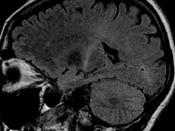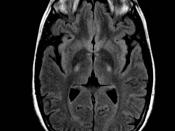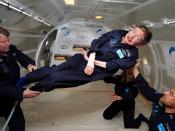Amyotrophic Lateral Sclerosis
(Lou Gherig's Disease)
Amyotrophic Lateral Sclerosis is a deadly disease of the nervous system. Also known as Lou Gehrig's disease, ALS at this time affects 25,000 people in the U.S. today. One in 50,000 people will be affected in any one year. The average age for diagnosis of ALS is between 30 and 70, although there have been cases of teenagers contracting it.The average life span after diagnosis are three to 10 years, although 20 percent of those affected will outlive their prognosis by a number of years. ALS affects more men than women. Approximately 60 percent of those affected are male, 40 percent are female.
Little is known about the exact cause of ALS at this time, although it can be traced back to chromosome 21. The defect is inherited as an autosmal dominant trait. Other theories such as metal poisons, viral infections, even aging have been considered.
ALS attacks the motor neurons in your nervous system that control your muscles. Your motor neurons slowly deteriorate, causing your muscles to not receive information from your brain. Your muscles then become useless and begin to deteriorate.
Symptoms of ALS include:
Tripping and falling
Loss of motor control in hands and arms
Difficulty speaking and swallowing or difficulty breathing
Persistent fatigue
Twitching and cramping, sometimes severely
As ALS progresses, all voluntary muscles become useless. The patient cannot eat, breathe or communicate with others. Total life support may be the only thing keeping them alive. ALS can lead to total paralysis.
Although there is no cure, medications such as siazepam can assist with controlling spasms and muscle cramps and saliva. Siazepam can also help control muscle twitching. Physical therapy is important for patients with ALS to maintain flexibility in joints and to prevent contractures, or...


